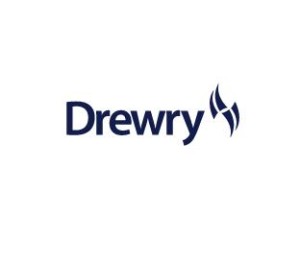The withdrawal of Hanjin Shipping’s tonnage has not been enough to rectify the Asia-Mediterranean trade’s supply-demand imbalance and the new alliance schedules for next year do nothing to address this issue, according to shipping consultancy Drewry.
Westbound volumes rose by 1.8% in the third quarter and the growth rate for the year to date is now registering 2.9%. Asian exports shipped to the West Mediterranean, including North Africa, grew by 2.8% between July and September, while traffic to the eastern sector of the trade only expanded by 0.8%.
Westbound slot supply, which by August was starting to grow at a rate of over 12%, has in the last two months returned to levels that existed a year ago, due largely to the suspension of the CKYHE’s MD3/HPM pendulum service to which only Hanjin vessels had been assigned. That enforced reduction of provision was not enough as ship utilisation throughout the whole of the third quarter barely rose above 80%. The temporary merging at the end of October of Ocean Three’s Adriatic (PHOEX) and Black Sea (BEX) loops as part of its Winter Programme will no doubt improve load factors, but focus is now turning to what the new alliance structures will be offering come next April.
The Ocean Alliance has unveiled five end-to-end services (coded MED) with two of its North Europe loaders featuring wayport calls at Piraeus and Tangier. Two of the services will focus on the niche Black Sea and Adriatic markets, while MED1 and MED2 will essentially serve the West Med leaving MED4 to concentrate on the East Med ports. Piraeus and Marsaxlokk are selected as the Alliance’s core transhipment centres in the Mediterranean – not surprisingly given Cosco Shipping’s and CMA CGM’s respective interests in those ports. No fewer than nine Chinese ports, including Hong Kong, are covered in the Far East but each of the five loops are given a call at either Busan or one of the Taiwanese ports, Kaohsiung or Taipei.
THE Alliance will offer three end-to-end weekly sailings (coded MD) with one of its North Europe shuttlers making a call at an unspecified West Med hub. The first two loops will primarily focus on the West Med sector while MD 3 will confine itself to the East Med, including no less than three calls at Turkish ports – Ambarli, Izmir and Mersin. In the Far East, the alliance is covering only four Chinese ports at this stage, and apart from an unnamed SEA hub, the only other load ports will be Busan and Kaohsiung. Similar to the members’ North Europe product range, it would appear the emphasis will be on fast transit times. Three Mediterranean end-to-end services do represent a major step-up for the new group’s partners: the G6 alliance – from which only three members will survive in THE Alliance – today essentially only has one dedicated Asia-Med loop, and K Line and Yang Ming are the smaller partners in the existing CKYHE union. The marketing arms of THE Alliance’s membership will therefore face a challenge, Drewry said.
“If 2M does not increase the number of sailings it offers the Asia-Mediterranean market next year, currently four end-to-end loops, and Zim retains its two services then the number of dedicated connections will next April total 14, which is identical to what is provided today,” according to Drewry.
Copyright Ships & Ports Ltd. Permission to use quotations from this article is granted subject to appropriate credit given to www.shipsandports.com.ng as the source.

